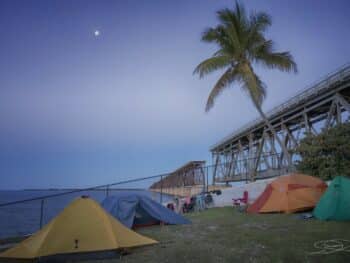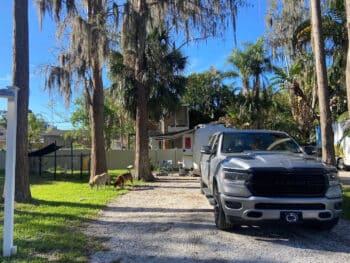Probably the most famous state in the US for beach life is Florida (FL). Given its subtropical location and year-round warmer weather, it’s a prime place for an oceanside vacation at any time of year. With two lovely coastlines, the Atlantic Ocean on the east side and the Gulf of Mexico on the west side, there’s something for everyone.
Top Beaches and Coastal Towns in FL
From the Panhandle in the north down south to the Florida Keys, “The Sunshine State” has 1,350 miles of coastline. The oldest continuously occupied city in the US resides here, Saint Augustine, which has some nice local beaches. Miami, the second-largest city in the state, is iconic for its beachside skyline. From St. Petersburg to Destin to Fernandina Beach, there are many awesome beach towns to see.
Guide to Visiting the Beaches in Florida

With its soft white sand beaches and bright blue waters, the Sunshine State is a year-round vacation destination for Americans and international tourists. Boasting 8,436 miles of coastline (NOAA measurements), the second most in the country, there are plenty of ways to enjoy the sands from many sides of the state.
Florida has drawn visitors to its warm and tropical climate for centuries, dating back to an era when native tribal people would settle by the sea for fishing, hunting, and gardening opportunities. While most people know about the Mayflower and pilgrims arriving on US soil in 1620, Florida has had many European adventurers on its shores since at least the 1500s.

The rich history of Spanish and French explorers on the coast is prevalent throughout many of the state’s beach towns. St. Augustine, in the east part of the state, was founded in 1565 and is the longest continuously inhabited city in the country.
Today, much of the Florida coast has been developed to accommodate travelers, although a few spots are unspoiled and natural.
Florida Beach Locations

Florida is an interesting location because it is a peninsula that falls between the Gulf of Mexico and the Atlantic Ocean. There are four distinct areas that many tourists like to target for a vacation.
The Gulf of Mexico
Known for its amazing sunsets, powdery white sands, and clear turquoise waters, Florida’s Gulf Coast offers some of the best beaches in the country. The world-famous Siesta Key and Venice Beaches are recognized for their picture-perfect backdrops and plentiful fishing. The Gulf typically has warmer water compared to the Atlantic, with an average of 82-87℉ in the summer.

Atlantic Ocean
Home to Daytona Beach, Ormond Beach, Fernandina Beach, and historic St. Augustine, the Atlantic side of Florida showcases jaw-dropping sunrises and 360 miles of shores. Nature lovers will get their fix on the Sunshine State’s east side with five national parks, 38 state parks, and seven national wildlife refuges. This coast has bigger waves, constant sea breeze, and plenty of space to relax and do water sports.
The Keys
Keys beaches have a distinct tropical Caribbean vibe and smaller sandy beaches. The water is shallower and still warm, ideal for visitors that like swimming and snorkeling. Waves are smaller on the keys due to the coral reefs guarding the shores, making these areas the perfect choice for a quiet, peaceful experience on the beach.
Panhandle
Florida’s Panhandle is along the Gulf Coast but has many of the state’s most famous beach towns. Filled with velvety sands and azure waters, locals and visitors love this area for its premium tropical atmosphere. Destin, Pensacola, and Panama City are three of the region’s coastal gems, with lots to do on and off the sand. Since this area is in proximity to many southern states, expect to experience the “hospitable charm” for which the South is known.
Coastal Weather

With an average of 237 days of sunshine per year, it’s no wonder how Florida got its nickname. While a lot of the state is pretty temperate or hot year-round, there are some differences between the north and south regions.
Florida weather is understood in two seasons – wet and dry. The dry season starts mid-October and goes through May when the wet rainy season begins. This can throw some curveballs for visitors coming to the state in the summertime for beaches and theme parks.
Beach towns get visitors in all months, but summertime is the peak season. The southern part of the state is warmer, with an average high temperature of 75-91℉ throughout the year, while the north hovers around 90-105℉ in summer and can get as low as 50℉ in the winter. Florida is very humid, sometimes making it feel warmer outside than the thermometer reads.
Hurricane season in the Sunshine State is from June through the end of November. Most occurrences of this type of storm happen in August or September, but they can occur at any time.
Wildlife

Florida has no shortage of wildlife. The Nature Conservancy has stated that this state is one of the most biodiverse in the country. Visitors will see animals from several categories while traveling the state, including various insects, mammals, reptiles, marine life, and more. Over 700 land animals, 1,000 ocean creatures, and 2,000 types of freshwater fish live in Florida.
When exploring the parts of the state with lots of wildlife, it’s essential to pay attention to warning signs and follow the rules for leaving the animals alone. When bothered, some creatures might feel threatened and can attack or feel more comfortable approaching humans.
Alligators
When people think of traveling to Florida, alligators are sure to come to mind. These creatures are the official state reptile and can be found throughout the region’s lakes, rivers, swamps, and near water. They are occasionally known to be spotted on golf courses, beaches, and metro-area parks. While the thought of a gator encounter is scary, there is only a one in 3.1 million chance of getting attacked by an unprovoked animal.
Manatees
These gentle giants are related to the elephant and are Florida’s official state marine mammal. One of the best places to observe these creatures is the Crystal River National Wildlife Refuge from November to April. However, they can be spotted at several places on all state sides.
Sharks
Many sharks are common in Florida’s oceans, bays, and nearshore waters. The International Shark Attack File records an average of 25 attacks per year on Florida beaches, which is a high number compared to other states and parts of the world. Sharks are more common in the Keys and the Atlantic Ocean, near beaches like Cocoa Beach and Daytona Beach. When swimming or participating in water sports, it’s important to stay vigilant and follow safety protocols.
Other Popular Sealife
Florida is home to many other fascinating sea creatures like whales, sea turtles, and dolphins. Multiple beach towns offer tours on the water to view these majestic animals. This is an excellent option for viewing wildlife from a safe distance.
Accommodations

Whatever type of lodging you’re looking for, Florida’s beaches have it. Resorts are on all coasts, but regular hotels and budget-friendly options exist. With the popularity of vacation rentals, this is another great option for privacy and larger groups to enjoy time at a beach. Tourists can expect higher prices during the summer than in the off-season from the fall to early spring.
In addition to the traditional lodgings, camping is prime in Florida. There are quite a few campgrounds near the beach in all parts of the state. However, keep in mind that these sites are also some of the most popular and can be booked out months in advance.
Water Sports

Outdoor enthusiasts that love the water will have plenty to choose from on all the beaches in Florida. Some of the most popular activities are kayaking, snorkeling, swimming, paddleboarding, surfing, and boating. Hiking and biking trails are also often near the shore.
Visitors don’t need to bring their gear when they travel, as many rental companies offer day-use of recruitment for out-of-towners.
Make the most of your time in America’s most popular year-round destination for beach getaways. Whether you explore the Gulf of Mexico or the Atlantic Coast sides, you’re sure to have a terrific Florida vacation.









